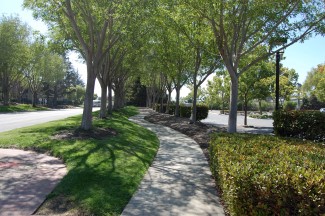Brief history: About 15 years ago, I got a Nikon D40, and I took it everywhere I went for a few years. Eventually I wanted to get into video, so I "graduated" to a D5300. Soon after that, I stopped bringing my "big" camera everywhere I went. But over the past couple years, I've been getting back into it, and I've been encountering an issue that I'm not sure how to solve.
My problem: The pictures I take with my D5300 are often blown out, especially compared to my D40. I've tried shooting with the automatic settings, as well as adjusting my shutter speed, aperture, and ISO.
I thought I was going crazy, but today I took them both out for a spin to compare their pictures. Here are some examples:
(D40 on left, D5300 on right)
automatic, 1/320, f/9, iso 200, focal length 18mm




These were all shot in automatic mode, and all of the settings ended up the same. I also put my D5300 in manual mode to make sure the settings matched (shutter speed 1/320, aperture f/9, iso 200, focal length 18mm) but I got similarly washed-out results.
The effect isn't super obvious, but it's enough that I'm feeling pretty discouraged from taking my D5300 out. I feel like I could "trust" my D40 more back in the day.
Is there another setting I should be adjusting? Or am I just bad at cameras?
Update
I read through all of the answers, tried applying the advice, and took my cameras out for another spin.
First, I don't think my aperture stop down lever is bent. Here is my aperture diaphragm at f/3.5, f/4, f/4.5, and f/5:




It's a little hard to tell, but I can definitely see the aperture diaphragm changing, especially between f3.5 and f5.
Next, I made sure that "Active D-lighting" was disabled and that my exposure compensation was set to 0, and I took my cameras out for another test run. The photos from the D5300 are still blown out compared to the D40:
(Again, D40 on left, D5300 on right)
Automatic, 1/400, f/10, iso 200, focal length 18mm








Automatic, 1/250, f/8, iso 200, focal length 18mm


If nothing else, I've definitely convinced myself that I'm not just imagining the difference.


